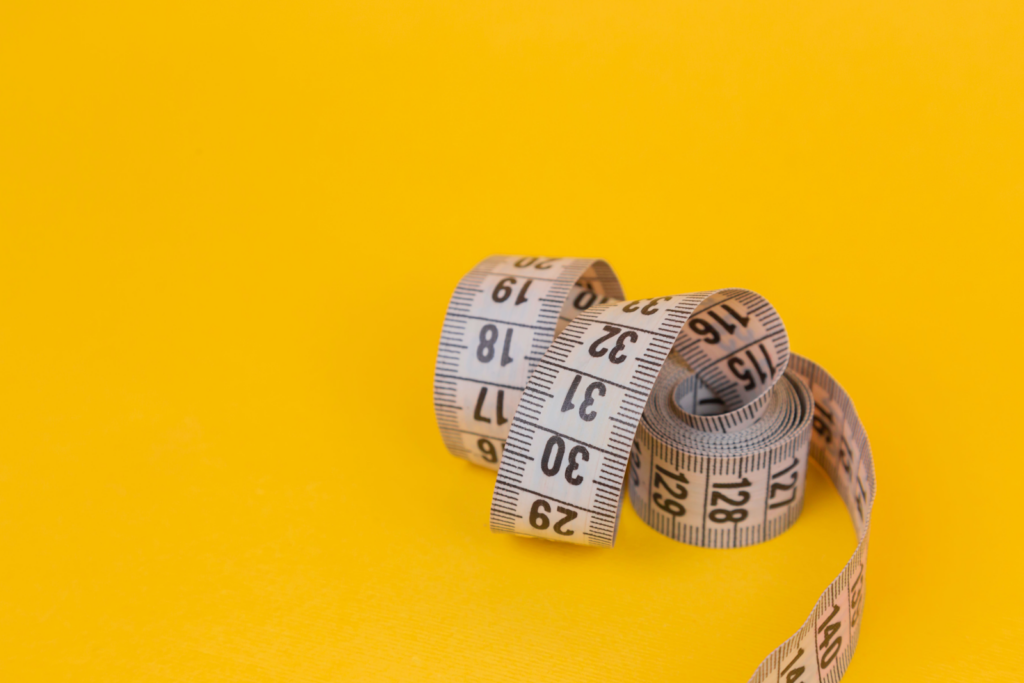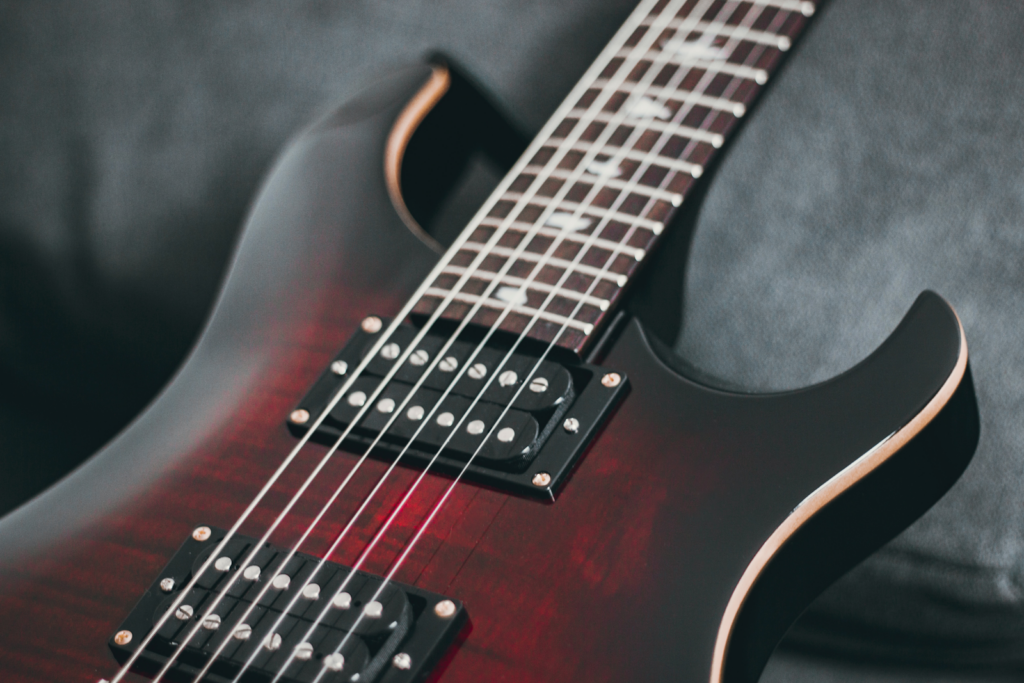Guitar action is important to the playability and sound quality of any guitar. In this guide, we’ll delve into the world of guitar action, exploring its nuances, how to measure and adjust it, and the impact it has on your playing experience.
What is Guitar Action?
Guitar action is a term that comes up time and time again in the guitar world. It refers to the distance between the strings and the fretboard. This detail may seem small, but it significantly influences the playability, tone, and overall feel of your guitar. Understanding guitar action is essential for players of all levels, as it affects every aspect of your interaction with the instrument.
The Fundamentals
High Action: This is when the strings are set relatively high above the fretboard. High action requires more pressure to press the strings down, which can contribute to a fuller, more resonant sound but might be make the strings hard to play, especially for beginners.
Low Action: This means the strings are closer to the fretboard. This setup makes it easier to press down the strings and play faster, but if the action is too low, it can lead to issues that can affect your playing.
The Impact on Playability and Comfort
Lower action is generally more comfortable for fast playing and intricate fretwork, making it a favorite among lead guitarists and shredders. In comparison, high action can cause finger fatigue and discomfort, particularly during long playing sessions or complex chord progressions.
Influence on Sound and Tone
Higher action can contribute to greater volume and resonance, particularly in acoustic models, as the strings have more room to vibrate. Lower action can lead to fret buzz, where the strings touch the frets when played, causing a “buzzing” sound, detracting from the purity of the guitar’s tone.
Variables Affecting Guitar Action
Electric and acoustic guitars typically have different action setups. Electric models usually have lower action due to their lighter gauge strings and solid body construction, whereas acoustics generally have higher action to accommodate their acoustic projection and heavier strings.
Heavier strings may require higher action to avoid buzzing against the frets, while lighter strings can sit closer to the fretboard.
The curvature or ‘relief’ of the guitar’s neck also affects action. A slight bow in the neck is normal and helps to accommodate string vibration without buzz.
How to Measure Guitar Action

Important Tools
To accurately measure guitar action, you’ll need an action gauge or a ruler capable of measuring in both inches and millimeters. These tools are designed to give precise readings of string height above the fretboard.
Step-by-Step Measurement Process
- Tune Your Guitar: Before measuring the action, ensure your guitar is correctly tuned. This ensures that the tension on the guitar neck and strings is at playing level, which affects the action.
- Position the Guitar: Place your guitar in a playing position or lay it on a flat surface. This positioning is crucial for an accurate measurement.
- Locate the Correct Fret: The standard reference point for measuring action is at the 12th fret, which is halfway along the string’s length. This location gives a good representation of the action across the fretboard.
- Measure the String Height: Using the action gauge or ruler, measure the distance from the top of the 12th fret to the bottom of each string. This measurement is typically done for both the low E string (thickest string) and the high E string (thinnest string), representing the bass and treble side action heights.
Adjusting Guitar Action
Adjusting guitar action involves a delicate balance. The main components to consider are the bridge, truss rod, and nut slots. On electric models and brands, you can individually adjust the bridge saddle height, offering precise control over each string’s action. Acoustic guitars often require adjustments to the bridge or nut to alter action.
Finding the Right Action for Your Acoustic Guitar

Setting the right action on an acoustic guitar is a delicate balance between ensuring playability and maximizing the instrument’s natural sound. Acoustic guitars, with their unique construction and string tension, require a thoughtful approach to action adjustment.
Here’s how you can find the optimum action for your acoustic guitar.
Understanding Acoustic Guitar Action
Acoustic guitars are known for having higher action compared to electric guitars. This higher action is crucial for reducing guitar string buzz and allowing all the strings to vibrate freely, which is essential for the acoustic guitar’s rich and full-bodied sound.
Acoustic guitars typically use heavier gauge strings, which exert more tension on the guitar neck. The higher action compensates for this tension, preventing the guitar strings from buzzing against the frets, especially when strummed with force.
How Playing Style Influences Action Adjustment
Fingerpicking: If you primarily play fingerstyle or fingerpicking songs, a slightly lower action may be more comfortable, as it will help you achieve easier fretting and smoother transitions between notes.
Strumming: Strummers and rhythm players might prefer a higher action. This enhances the guitar’s volume and prevents the strings from buzzing against the frets during vigorous playing.
Comfort and Playability: While higher action contributes to better sound quality, it shouldn’t be at the expense of playability. The action should be high enough to prevent buzzing but low enough that it won’t cause undue strain on your fingers.
Measuring and Adjusting Action
A common starting point for measuring action on an acoustic guitar is at the 12th fret. A typical range for the action at this fret is between 2.3mm to 3mm for the low E string.
Tools and Adjustments:
Use a ruler or a specialized string action gauge to measure the height of the strings above the fretboard. Adjustments to lower the action can be made by carefully sanding down the bridge saddle. Raising the action might involve adding material to the saddle, although this is less common.
You can also tweak the truss rod to adjust the neck’s relief, which indirectly affects the action. This should be done with caution, as over-adjusting can damage the guitar.
Seeking Professional Help
If you’re unsure about making these adjustments yourself, think about seeing a professional – especially for high-value or vintage instruments.
Keep in mind that wood is susceptible to environmental changes, so your guitar’s action might change with seasons and humidity levels. Regular check-ups with a professional can help maintain optimal action.
Don’t be afraid to experiment with different action heights to find what works best for your playing style and comfort level. Finding the right action is about balancing the guitar’s natural sound capabilities with your personal comfort and playability.
Finding the Right Action for Your Electric Guitar

Adjusting the action on an electric guitar is a critical step in customizing the instrument to suit your playing style and comfort. Unlike acoustic guitars, electric guitars offer more flexibility in action adjustments, catering to a wider range of playing techniques and preferences.
Here’s how you can find the perfect action for your electric guitar, no matter the brand or style.
Understanding Electric Guitar Action
Electric guitars are often set up with lower action. This is ideal for players who prioritize fast finger movements, easier bending, and smoother legato playing.
Lighter gauge strings on electric models typically accommodate lower action without causing fret buzz, while heavier strings might require slightly higher action.
Factors to Consider
Lead Guitarists: If you’re primarily a lead guitarist focusing on solos and intricate fretwork, lower action will help with faster playing and easier string bending.
Rhythm Guitarists: For rhythm playing, a medium action might be more appropriate, providing a balance between playability and tonal clarity.
Genre Influences:
Rock and Metal: These styles often benefit from lower action for swift, agile playing.
Blues and Jazz: Players might prefer a slightly higher action for a cleaner tone and to allow for expressive string bending.
Adjusting the Action
One of the advantages of electric models is the ability to adjust the action string by string. This is done via the bridge saddles, allowing for precise control over the action of each string.
The action is typically measured at the 12th fret. A standard height for electric guitars ranges from 1/16th of an inch (1.6mm) for the high E string to around 3/32nd of an inch (2.4mm) for the low E string.
The truss rod should be adjusted to ensure proper neck relief before setting the action. This helps maintain a balance between a comfortable action and avoiding fret buzz.
Personal Preference and Comfort
The best action setting often comes down to personal preference. Don’t hesitate to experiment with different heights to find what feels best for your playing style.
If you’re new to guitar maintenance or want to ensure the best possible setup, consider getting a professional setup. A skilled technician can adjust the action, intonation, and neck relief to suit your preferences.
Regular Maintenance
Keep in mind that changes in humidity and temperature can affect your guitar’s wood, potentially altering the action over time. Regular maintenance and adjustments are key.
Always aim to strike a balance between ease of playing and the quality of sound. Just like with an acoustic, if your action is too low, it might cause fret buzz, while an action that’s too high could make playing unnecessarily difficult.
Remember, finding the right action for your electric guitar involves understanding your playing style, the unique capabilities of your instrument, and a bit of personal preference. By carefully adjusting and regularly maintaining your guitar, you can ensure it plays smoothly and sounds great, enhancing your overall playing experience.
Regular Check-ups
Your guitar action might change over time due to factors like humidity, temperature, and regular wear and tear. Regular check-ups and minor adjustments can help maintain your ideal action setting. As mentioned above, if you’re particularly fond of your model or own vintage guitars, it’s important to get your guitar action checked and adjusted by a professional.
Common Issues and Solutions

Properly setting up guitar action is vital for a comfortable playing experience. However, guitarists often encounter specific issues related to action. Don’t worry – here’s a quick look at a few of the common ones.
Fret Buzz: Causes and Fixes
Fret buzz is a common problem, especially with low-action settings. It occurs when the strings vibrate against the frets, producing an undesirable buzzing sound. Luckily, this is an issue that can be fixed if you follow these simple steps:
Identify the Buzzing Frets: Play each fret on each string to identify where the buzz occurs. This will help you pinpoint the specific area needing adjustment.
Adjusting the Truss Rod: If the buzz is widespread, the neck might be too flat. Adjusting the truss rod to add a slight bow can increase the action just enough to eliminate the buzz.
Raising the Bridge: For localized buzz, raising the action at the bridge can help, especially if the buzz is on the lower frets.
Checking Nut Slots: If the buzz occurs at the first few frets, the nut slots might be cut too deep. A guitar technician can fill and recut these slots to the correct depth.
High Action: Difficulty in Playing
High action makes fretting notes harder, leading to discomfort or playing fatigue. To lower the action, follow these simple steps.
Lowering the Bridge: If you have an electric model, this can often be done with a simple screw adjustment. For acoustics, it might involve sanding down the bridge saddle.
Adjusting the Truss Rod: A truss rod adjustment can also lower the action, especially if the neck has too much relief.
Refitting or Adjusting the Nut: If the action is high at the first fret, the nut may need to be lowered. This is a delicate process and might be best handled by a professional.
String Rattle
String rattle is usually caused by loose hardware or worn frets. Here’s what to do if you come across it.
Tighten Loose Hardware: Check and tighten any loose screws or bolts, particularly at the tuning machines and bridge.
Refret: Worn or uneven frets can cause your strings to rattle. Professional fret leveling or refretting can resolve this issue.
Intonation Issues
Improper action can affect intonation, the guitar’s ability to stay in tune across the fretboard:
Adjusting Intonation at the Bridge: This involves moving the bridge saddles forward or backward to ensure each string is the correct length for proper tuning.
Overall Setup Check: Sometimes, a combination of action, truss rod, and bridge adjustments is necessary for optimal intonation.

Frequently Asked Questions
How do I get the best action on my guitar?
To achieve the best action on your guitar, follow these steps:
Understand Your Preferences: Determine your playing style and what you find comfortable. Lower action is generally better for fast playing and bending, while higher action suits strumming and a fuller sound.
Measure and Adjust: Use a ruler or action gauge to measure the current action. Adjust the truss rod, bridge, and nut as necessary. For electric guitars, adjust the bridge saddles for individual strings.
Regular Maintenance: Keep your guitar in a stable environment and check the action regularly, as changes in temperature and humidity can affect it.
Professional Setup: If you’re unsure, consider getting a professional setup for optimal results.
How do you know if your action is too high?
You can determine if your guitar’s action is too high by considering these factors:
Difficulty in Playing: If you’re struggling to press down the strings, especially for barre chords or fast passages, the action might be too high.
Finger Fatigue: Excessive finger pain or fatigue after playing could be a sign of high action.
Intonation Issues: When the guitar sounds out of tune as you move up the fretboard, it could be due to excessively high action.
Comparing Standards: Compare your guitar’s action to the standard measurements for acoustic or electric guitars. If it’s significantly higher, it’s probably too high.
Conclusion: Mastering Guitar Action for Optimal Playability
Understanding and adjusting the action on your guitar is an essential skill for every guitarist, as it directly impacts the instrument’s playability, comfort, and sound quality.
Remember, the ideal action varies depending on your playing style, the type of strings you use, and your physical comfort. While lower action might suit fast, intricate playing styles, higher action could be preferable for those seeking a richer, more resonant sound. Regular maintenance and adjustments are crucial, as even slight changes in humidity and temperature can alter your guitar’s action.
For those new to guitar maintenance, don’t hesitate to consult a professional for a setup. This can provide a solid baseline from which to make further adjustments yourself. As your playing evolves, so might your preference for action height. Embrace this as part of your growth as a musician. By mastering this aspect of guitar setup, you enhance not only the quality of your instrument but also the joy and comfort of your playing experience.


